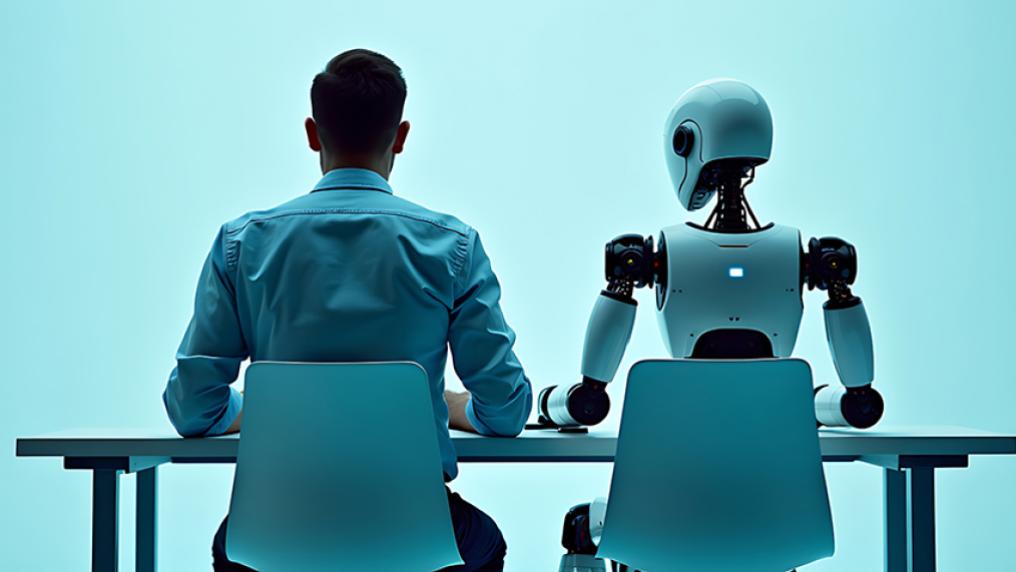These jobs will thrive – but others may vanish – as AI transforms Australia’s workforce

The Commonwealth Bank of Australia made headlines when it announced last week it would cut 45 call centre jobs, thanks to the introduction of an AI chatbot.
This only added fuel to ongoing speculation – and some alarmism – about how artificial intelligence (AI) is going to transform the world of work in Australia.
But this revolution isn’t a simple story of “robots” coming and taking everyone’s jobs. In some industries, they’re already helping people do parts of their jobs better and faster.
Junior lawyers are using AI tools to help with some of the more mundane tasks they are often assigned. Recruiters are already widely using AI tools to screen CVs and help with hiring decisions – despite concerns about possible inadvertent bias.
So where is this all going?
We used a model of the Australian economy and built on existing research by the International Labour Organization. We simulated two future versions of Australia through to 2050: one in which businesses and government adopt AI extensively, and one in which there is no AI – that is, a future that looks rather like today.
Comparing these two futures helps us understand what we might gain and lose from this new technology.
A very different future
AI is a very disruptive technology, meaning a future with it looks pretty different to a future without it.
To help forecast where we might be headed, the International Labour Organization has produced a detailed set of “exposure indices” for more than 400 different occupations. These indicate the extent to which human input to each occupation will be displaced or augmented by AI.
The most exposed occupation is data entry clerk, for which the International Labour Organization estimates 70% of the tasks currently done by humans could be done or improved by AI. Bricklayers and dental assistants, at the other end of the scale, are among jobs classified as “not exposed”.
What this means for Australia
To perform our simulation, we mapped these occupation categories onto the Australian context. The International Labour Organization indices indicate 32% of jobs in Australia could be done by AI. But this doesn’t mean that 32% of people will lose their jobs overnight.
It will take time for AI capabilities to be installed, giving people time to train for alternative careers. Much of the impact is likely to be years away, meaning that school-leavers can make different choices and prepare for an AI world.
Many studies, including the Productivity Commission’s interim report on AI, find AI will drive faster economic growth. In a faster-growing economy, more people will work as teachers, hairdressers, and carers, because AI isn’t expected to be as useful in those roles.
This faster-growing economy will also require more school buildings, hair salons and care homes.
As a result, some of the occupations with the largest expansions will be in the construction and building services sectors. Cleaners, construction labourers, carpenters and bricklayers will all have big roles to play in an AI future.
Managing the transition
Our simulation shows that during the transition period where employers gradually adopt AI, the unemployment rate will be higher than normal, as workers and investors will be seeking new jobs or opportunities. But there is scope for governments to act to minimise the disruption.
First, they can prepare people for careers in occupations that will grow strongly, such as those at the top of our chart.
Second, government can facilitate early, jobs-focused investment in industries less exposed to AI, particularly those that require lots of interpersonal input.
For example, investment in a world with fewer business analysts and more hospitality workers should be targeted at hotels and hospitality venues, rather than office space.
And third, AI will drive economic growth and tax revenues. This creates an opportunity for the government – a major employer – to create and fill more jobs in support of a safe and healthy society, such as drug and alcohol services, child protection case workers, and teachers’ aides.
Bringing everyone along
Although we find that the economy will grow faster in an AI world, there’s no guarantee this growth will include everyone.
Overall, our simulation paints a picture of a larger and better resourced economy, showing us that total employment won’t change a lot, but employment in some occupations will be much larger or smaller than it would be in a non-AI future.
But our simulation also suggests growth in profits will be stronger than growth in wages. Governments will need to keep a close eye on wage growth and equality, and may need to address emerging issues through tax policy, competition policy and industrial relations.
Janine Dixon, Director, Centre of Policy Studies, Victoria University and James Lennox, Senior Research Fellow, Centre of Policy Studies (CoPS), Victoria University
This article is republished from The Conversation under a Creative Commons license. Read the original article.
![]()



